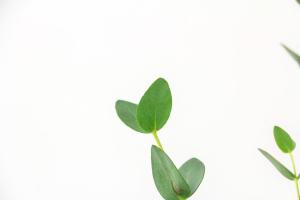Introduction
Air pollution is a growing concern all over the world, as it poses a significant threat to our health and the environment. The impact of air pollution on plants and trees is often overlooked, but it is a serious problem as it can cause long-lasting damage to the ecosystem. In this article, we will discuss how air pollution affects plants and trees.
Effects of Air Pollution on Plants and Trees
Air pollution can cause a wide range of effects on plants and trees, ranging from mild leaf damage to complete tree death. Air pollution can affect plants and trees in several ways, which we will discuss below:
1. Direct Damage to Leaves and Stems
Air pollutants such as sulfur dioxide, nitrogen dioxide, and ozone can directly damage the leaves and stems of plants and trees. These pollutants can cause necrosis or death of the plant tissue, which can result in reduced growth and photosynthesis. The accumulation of pollutants on the surface of leaves can also reduce their ability to absorb sunlight and produce food through photosynthesis.
2. Soil Acidification
Air pollution can also affect the pH of the soil, leading to soil acidification. Acidic soil can cause a reduction in plant nutrient availability, which can result in reduced growth and increased susceptibility to pests and diseases.
3. Alteration of Plant Physiology
Air pollution can also cause a change in the physiology of plants and trees. For instance, high levels of ozone can damage the photosynthetic machinery of plants, reducing their ability to absorb sunlight and produce food. Also, air pollution can damage the root system of plants and trees, leading to reduced water and nutrient uptake. These physiological changes can result in reduced plant growth, weakened immune systems, and reduced resistance to pests and diseases.
4. Disruption of Pollination and Seed Germination
Air pollution can also interfere with pollination and seed germination. For example, high levels of sulfur dioxide can damage flower organs, reducing pollination rates. Similarly, pollutants such as carbon monoxide and nitrogen dioxide can disrupt the process of seed germination, reducing plant populations over time.
5. Increased Susceptibility to Pest and Disease Infestation
Air pollution can weaken the immune system of plants and trees, making them more vulnerable to pest and disease infestations. The accumulation of pollutants on the surface of leaves can create a favorable environment for pests and microbes to thrive, increasing the risk of disease transmission.
Conclusion
In conclusion, air pollution is a serious threat to the health and well-being of plants and trees. The effects of air pollution on the environment are often underestimated, but it is clear that air pollution can cause long-lasting damage to our ecosystem. As individuals, we can all take steps to reduce our carbon footprint and minimize our impact on the environment.

 how many times do yo...
how many times do yo... how many planted tre...
how many planted tre... how many pine trees ...
how many pine trees ... how many pecan trees...
how many pecan trees... how many plants comp...
how many plants comp... how many plants can ...
how many plants can ... how many plants and ...
how many plants and ... how many pepper plan...
how many pepper plan...






























